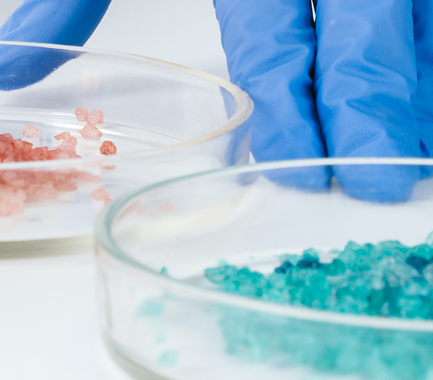Your contact
PENPET-Team - Hamburg

Christoph Meister
Sales
Tel. +49 (0) 40 - 675 7 99 30
sales@penpet.de
Get in touch with us.
Cyclohexanone
Cyclohexanone is an organic compound from the class of cyclic ketones. It is of great importance for the chemical industry as a starting material for the production of nylon and perlon and as a solvent. In large-scale processes, the compound is mainly obtained from cyclohexane by catalytic oxidation. Alternatively, cyclohexane can also be produced in a two-stage process of hydrogenating phenol with subsequent oxidation of the intermediate cyclohexanol.
Cyclohexanone is primarily used as an important intermediate in the production of perlon and nylon. For this purpose, large amounts of the compound are converted into caprolactam and adipic acid, which are the most important starting materials for the production of polyamide fibers. In addition, cyclohexanone is used as a solvent for natural resins, synthetic resins, paints, varnishes, paint strippers, waxes, cellulose nitrate and polyvinyl chloride (PVC). Synthesis processes in organic chemistry also use the compound as a base material for the construction of molecules with hexane ring components.
At PENPET, you can get cyclohexanone of the highest quality - from a reliable partner who will also meet your requirements in the long term. We look forward to receiving your inquiry for an individual offer. The timely delivery of the liquid can be carried out in packaging of different weights.
CAS no. 108-94-1
EINECS no. 203-631-1
Molecular formula: C6H10O
Synonyms: Anon, Pimelinketone, Ketohexamethylene, Anonsextone, Sextone, Cyclohexanone
Areas of application: Intermediate product for the production of polyamide fibers such as nylon and perlon, used as a solvent for paints, varnishes, waxes, natural and synthetic resins, polyvinyl chloride (PVC) and cellulose nitrate, starting material for chemical syntheses
More Information
Cyclohexanone is a non-aromatic, cyclic ketone based on a six-membered ring. One of the carbon atoms in the ring structure has a double bond to an oxygen atom. As a functional group, this carbonyl group determines the reaction behavior of the compound. For example, cyclohexanone can be converted into the alcoholic cyclohexanol by hydrogenation and enter into an aldol reaction with acidic or basic catalysis. Oxidation with concentrated nitric acid leads to the dissolution of the carbon ring and the formation of adipic acid.
Under normal conditions, cyclohexane is a colorless liquid that only boils at a temperature of 156 °C. The melting temperature of the compound is -26 °C. The oily, non-volatile liquid has a characteristic odor reminiscent of acetone and peppermint. The substance is very soluble in many organic solvents such as diethyl ether, ethanol, acetone and chloroform. However, its solubility in water is limited. The compound forms an azeotropic mixture with water, which has a common boiling point at a proportion of 43% cyclohexanone and can therefore no longer be separated by distillation.
Cyclohexanone can be stored stably and safely when handled as directed. When choosing the containers, it is important to note that the substance attacks plastics such as polystyrene, polyvinyl chloride (PVC) and rubber.
The liquid is flammable. Its vapors can form explosive air-vapor mixtures with the ambient air, which are heavier than air and can spread unnoticed on the ground. In order to avoid ignition, it is necessary to ensure a sufficient safety distance to possible sources of ignition such as flames, electrical discharges, sparks, as well as strongly heated surfaces and other heat sources. There is also a risk of explosion if the compound comes into contact with hydrogen peroxide, nitric acid, and other mineral acids. In addition, cyclohexanone reacts violently and dangerously with many oxidizing agents. It is possible that uncontrolled polycondensation reactions of the compound may arise with strong acids. The combustion or thermal decomposition of cyclohexanone produces dangerous gases that are harmful to health. Among other things, carbon dioxide and carbon monoxide are released.
Cyclohexanone is a highly irritating hazardous substance that poses a risk of poisoning. On the skin, the compound causes severe irritation, degreasing of affected areas and inflammation. Residues of the substance must be removed immediately with soap and water. In the eye, cyclohexanone can cause redness, burning pain, heavy tearing, and damage to the cornea. After contact with the compound or its vapors, eyes should be flushed thoroughly with water. In addition, an ophthalmological examination must be arranged.
Inhalation of aerosols or vapors of the substance will cause irritation and pain in the nose and throat. Severe exposure can cause damage to the lungs and mucous membranes. Swallowing cyclohexanone can cause gastrointestinal symptoms such as abdominal pain, nausea and vomiting, and irritation of the esophagus. The compound is easily absorbed through metabolic processes. Ingesting large amounts can cause central nervous system disorders such as dizziness, headaches, intoxication, feelings of tiredness, drowsiness, and unconsciousness. In addition, cardiovascular disorders, heart failure, breathing difficulties, acidosis, collapse and functional disorders of the liver, heart and kidneys can occur. A medical examination can determine the extent of the poisoning. In severe cases, gastric lavage and further medical treatment may be necessary.
Cyclohexane can damage aquatic organisms and is considered to be slightly hazardous to water. It is therefore necessary to avoid the compound infiltrating into the environment. The local authorities must be informed if larger quantities are released into water bodies, the soil, and the sewage system. Transport regulations apply to the flammable compound.
